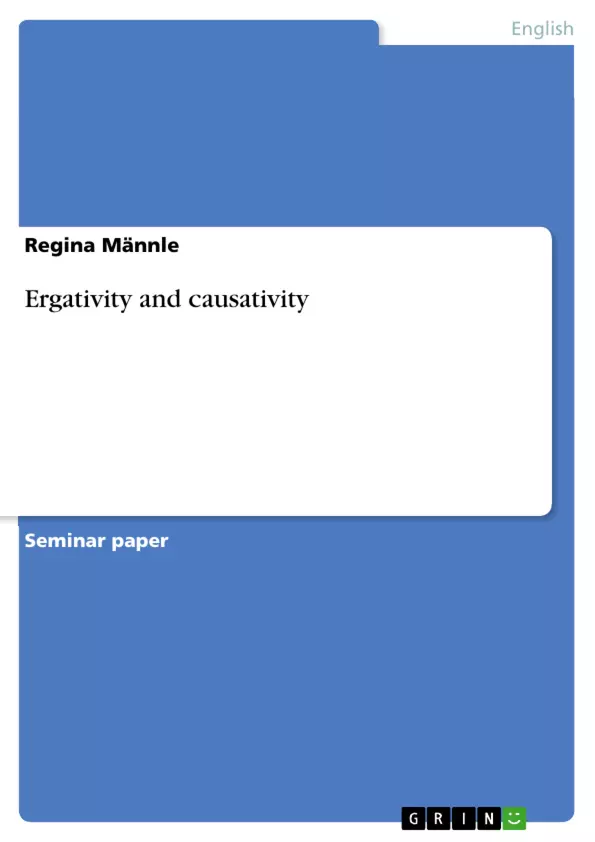The term ‘ergativity’ is used to describe a grammatical pattern in which there is a formal parallel between the object of a transitive clause and the subject of an intransitive clause. The subject of the transitive clause, however, is treated differently. Dixon, in his standard survey of ergativity, uses the following symbols for these three elements: S = intransitive subject, A = transitive subject, and O = transitive object (1994:6). Initially, the term ‘ergativity’ was only associated with case marking on constituents of a noun phrase. Manning summarises this as folllows: “The more patient-like argument of a transitive verb appears in the same absolutive case as the single argument of an intransitive verb, while the more agent-like argument of a transitive verb is marked differently, in what is known as the ergative case” (1996 : 3). Thus, ergativity is the counterpiece to accusativity, where one case is employed for the intransitive (S) and the transitive subject (A) (nominative) and another case marks the transitive object (O) (accusative).
The term ‘ergativity’ derives from the Greek words ergon ‘work, deed’ and ergátēs ‘doer (of an action)’ (Bussmann 1996 : 151) and thus relates to the active – the “more agent-like” – member of the pair involved in a transitive structure. Dixon states that the first use of this term was in 1912 in a study on the Dagestanian language Rutul (1994 : 3).
Table of Contents
- I. Ergativity
- I.1 Introduction
- I.2 Absolutive-ergative system vs. other systems
- I.3 Morphological, syntactic, and split ergativity
Objectives and Key Themes
This text examines the grammatical phenomenon of ergativity, exploring its characteristics, distinctions from other grammatical systems, and variations in its manifestation across languages. The text analyzes the concept of ergativity, contrasting it with the more common nominative-accusative system found in languages like English and German. It also delves into the various levels of ergativity, encompassing both morphological and syntactic aspects, and explores the concept of split ergativity, where the ergative pattern is applied selectively within a language.
- Ergativity as a grammatical pattern
- Comparison of ergative and nominative-accusative systems
- Morphological and syntactic ergativity
- Split ergativity
- Case marking and its role in ergativity
Chapter Summaries
The chapter "I.1 Introduction" defines ergativity as a grammatical pattern where the object of a transitive clause and the subject of an intransitive clause share the same formal marking, while the subject of the transitive clause is treated differently. The chapter provides a brief history of the term "ergativity," tracing its origins and its initial association with case marking. The chapter "I.2 Absolutive-ergative system vs. other systems" contrasts the ergative system with the more common nominative-accusative system, illustrating the differences in case marking between the two systems. It highlights the rarity of ergative languages in Europe and Africa but notes their presence in other regions of the world. The chapter "I.3 Morphological, syntactic, and split ergativity" delves deeper into the concept of ergativity, emphasizing the distinction between morphological and syntactic ergativity. It explores how ergativity can be manifested in various aspects of language, including case marking, verb agreement, and syntactic constraints. The chapter also introduces the concept of split ergativity, where the ergative pattern is applied selectively within a language.
Keywords
Ergativity, nominative-accusative, case marking, morphological ergativity, syntactic ergativity, split ergativity, absolutive case, ergative case, transitive clause, intransitive clause, thematic relations, agent, patient.
- Arbeit zitieren
- Regina Männle (Autor:in), 2008, Ergativity and causativity, München, GRIN Verlag, https://www.grin.com/document/112823



